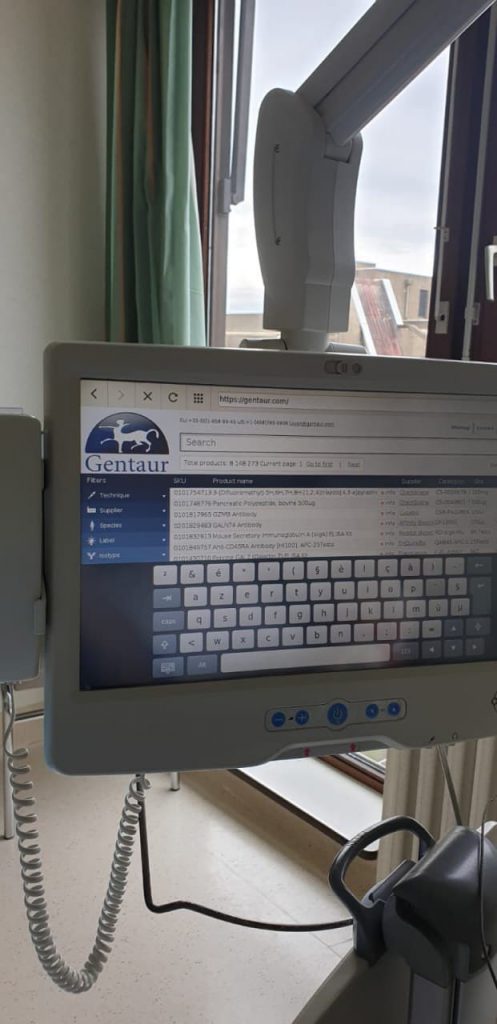Crosstalk between neurons and oligodendrocytes is essential for correct mind functioning. Multiple co-culture strategies have been developed to check oligodendrocyte maturation, myelination or the impact of oligodendrocytes on neurons. However, most of these strategies comprise cells derived from animal fashions. In the present protocol, we co-culture human neurons with human oligodendrocytes. Neurons and oligodendrocyte precursor cells (OPCs) had been differentiated individually from pluripotent stem cells in keeping with beforehand revealed protocols. After the harvesting of cells from bone marrow by flushing the femoral diaphysis and enzymatic digestion of stomach and inguinal adipose tissues, MSCs are chosen by their adherence to the plastic tissue tradition dish.
To examine neuron-glia cross-talk, neurons and OPCs had been plated in co-culture mode in optimized situations for extra 28 days, and ready for OPC maturation and neuronal morphology evaluation. To our information, that is one of the primary neuron-OPC protocols containing all human cells. Specific neuronal abnormalities not noticed in mono-cultures of Tuberous Sclerosis Complex (TSC) neurons, turned obvious when TSC neurons had been co-cultured with TSC OPCs. These outcomes present that this co-culture system can be utilized to check human neuron-OPC interactive mechanisms concerned in well being and illness.
Since their discovery, mesenchymal stromal cells (MSCs) have obtained loads of consideration, primarily as a consequence of their self-renewal potential and multilineage differentiation capability. For these causes, MSCs are a great tool in cell biology and regenerative medication. In this text, we describe protocols to isolate MSCs from bone marrow (BM-MSCs) and adipose tissues (AT-MSCs), and strategies to tradition, characterize, and differentiate MSCs into osteoblasts, adipocytes, and chondrocytes. Within 7 days, MSCs attain 70% confluence and are prepared for use in subsequent experiments. The protocols described listed here are simple to carry out, cost-efficient, require minimal time, and yield a cell inhabitants wealthy in MSCs.
Method for Primary Epithelial Cell Culture from the Rat Choroid Plexus
The choroid plexus consists of a community of secretory epithelial cells localized all through the lateral, third and fourth ventricles of the mind. Cerebrospinal fluid (CSF) is generated by the choroid plexus and launched into the ventricular atmosphere. This biofluid accommodates an enriched supply of proteins, ions, and different signaling molecules for extracellular assist of neurons and glial cells inside the central nervous system. Given that different cells within the mind additionally launch elements into the CSF, in vitro investigations of choroid plexus operate are essential to isolate processes selectively occurring inside and launched from this tissue.
Here, we describe a protocol to isolate choroid plexus tissue from every of the ventricular areas, and the cell tradition situations required to assist development and upkeep of these epithelial cells. This approach permits for investigations of the practical significance of the choroid plexus, akin to for the examination of stimuli selling the discharge of development elements and extracellular vesicles (e.g., exosomes and microvesicles) from ventricle-specific choroid plexus epithelial cells.
Investigations into glial biology have contributed considerably in understanding the physiology and pathology of the nervous system. However, intricacies of the neuron-glial and glial-glial interactions in vivo current vital challenges whereas delineating the person cell-type contributions, thus making the in vitro strategies exceedingly related to check glial biology. However, acquiring optimum yield together with excessive purity has been difficult for microglial cultures. Here we current a easy protocol to determine enriched astroglial in addition to microglial cultures from the neonatal rat spinal twine. This methodology ends in extremely enriched astroglial and microglial cultures with maximal yield.

Quantification of Hepatitis B Virus Covalently Closed Circular DNA in Infected Cell Culture Models by Quantitative PCR
Persistence of the human hepatitis B virus (HBV) requires the upkeep of covalently closed round (ccc)DNA, the episomal genome reservoir in nuclei of contaminated hepatocytes. cccDNA elimination is a serious goal in future healing therapies presently underneath improvement. In cell tradition primarily based in vitro research, each hybridization- and amplification-based assays are presently used for cccDNA quantification. Southern blot, the present gold customary, is time-consuming and not sensible for a big quantity of samples. PCR-based strategies present restricted specificity when extreme HBV replicative intermediates are current. We have not too long ago developed a real-time quantitative PCR protocol, by which complete mobile DNA plus all types of viral DNA are extracted by silica column.
Subsequent incubation with T5 exonuclease effectively removes mobile DNA and all non-cccDNA types of viral DNA whereas cccDNA stays intact and can reliably be quantified by PCR. This methodology has been used for measuring kinetics of cccDNA accumulation in a number of in vitro an infection fashions and the impact of antivirals on cccDNA. It allowed detection of cccDNA in non-human cells (major macaque and swine hepatocytes, and so forth.) reconstituted with the HBV receptor, human sodium taurocholate cotransporting polypeptide (NTCP). Here we current an in depth protocol of this methodology, together with a piece flowchart, schematic diagram and illustrations on find out how to calculate “cccDNA copies per (contaminated) cell”.
[Linking template=”default” type=”products” search=”Anti-Human Betacellulin” header=”1″ limit=”124″ start=”2″ showCatalogNumber=”true” showSize=”true” showSupplier=”true” showPrice=”true” showDescription=”true” showAdditionalInformation=”true” showImage=”true” showSchemaMarkup=”true” imageWidth=”” imageHeight=””]
The germinal heart (GC) is the positioning the place B cells endure clonal growth, affinity-based choice, and differentiation into reminiscence B cells or plasma cells. It has been tough to elucidate regulatory mechanisms for the dynamic GC B cell maturation and differentiation, partly as a result of experimental manipulation of GC B cells in vivo has been restricted and no in vitro system has been obtainable that resembles B cell response in GC. Here we describe the protocol for a tradition system named “induced GC B (iGB) tradition system” which might induce huge growth of B cells that exhibit GC B cell-like phenotype, and thus it mimics the GC response. This protocol might be helpful to elucidate the molecular mechanisms of GC B cell differentiation.

